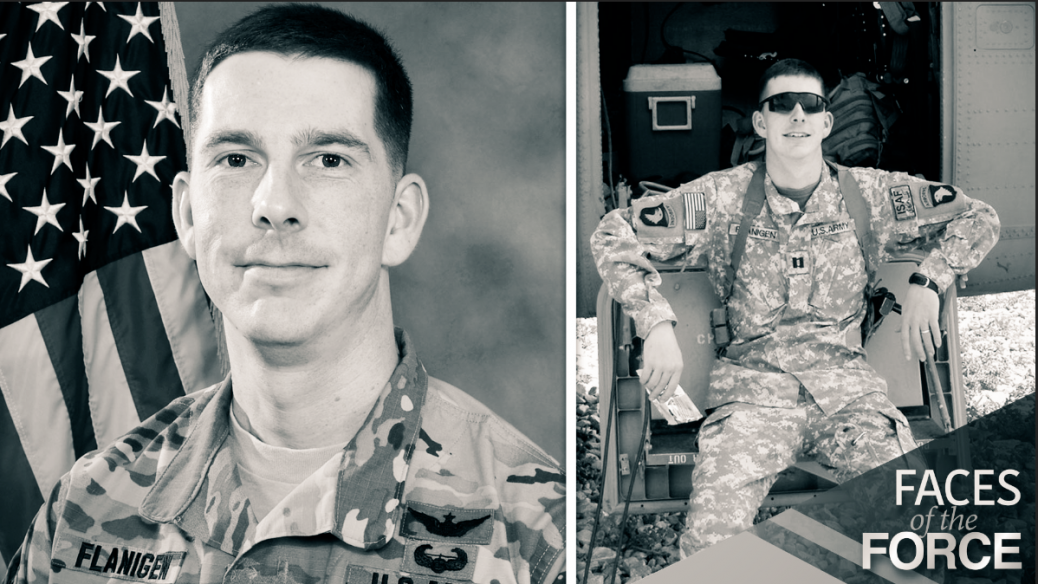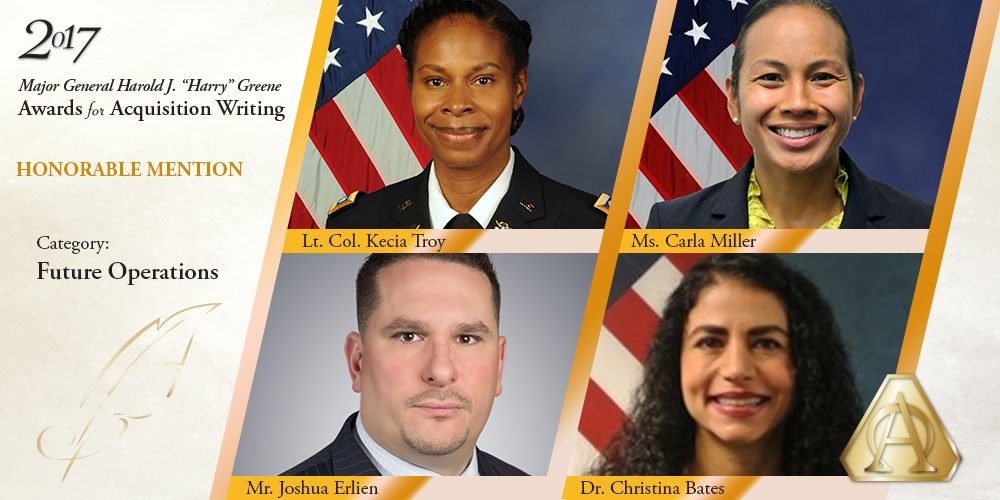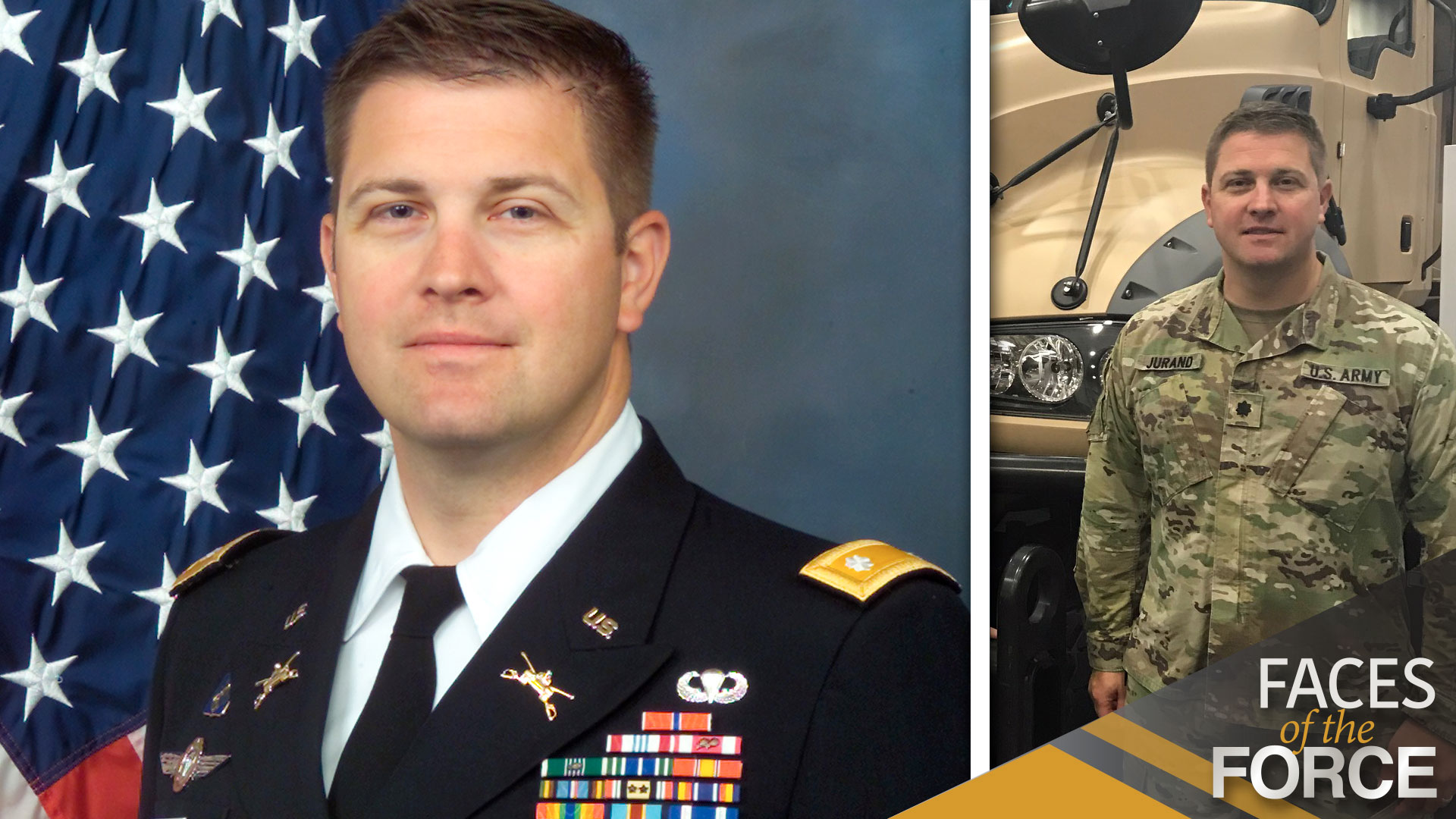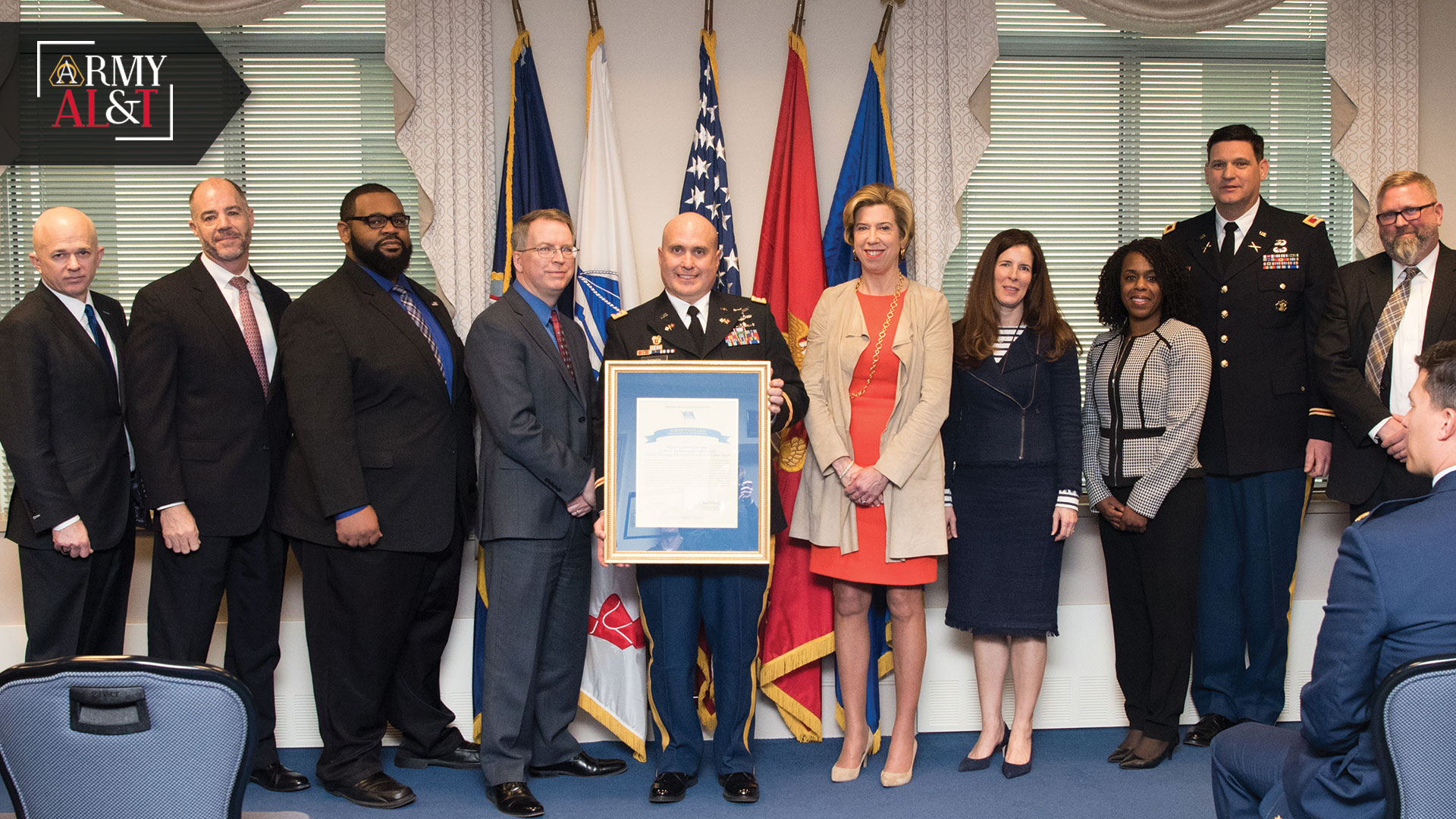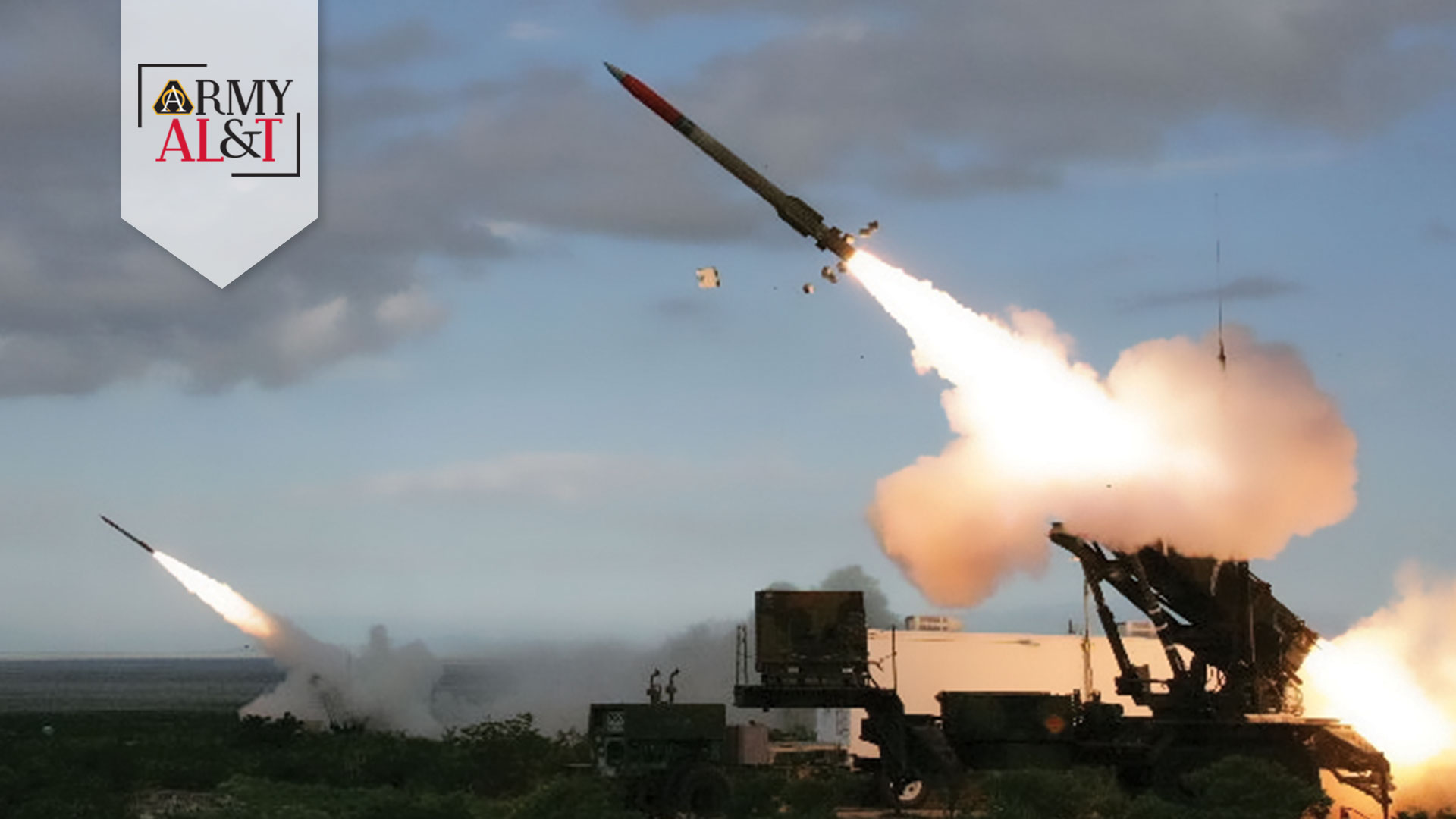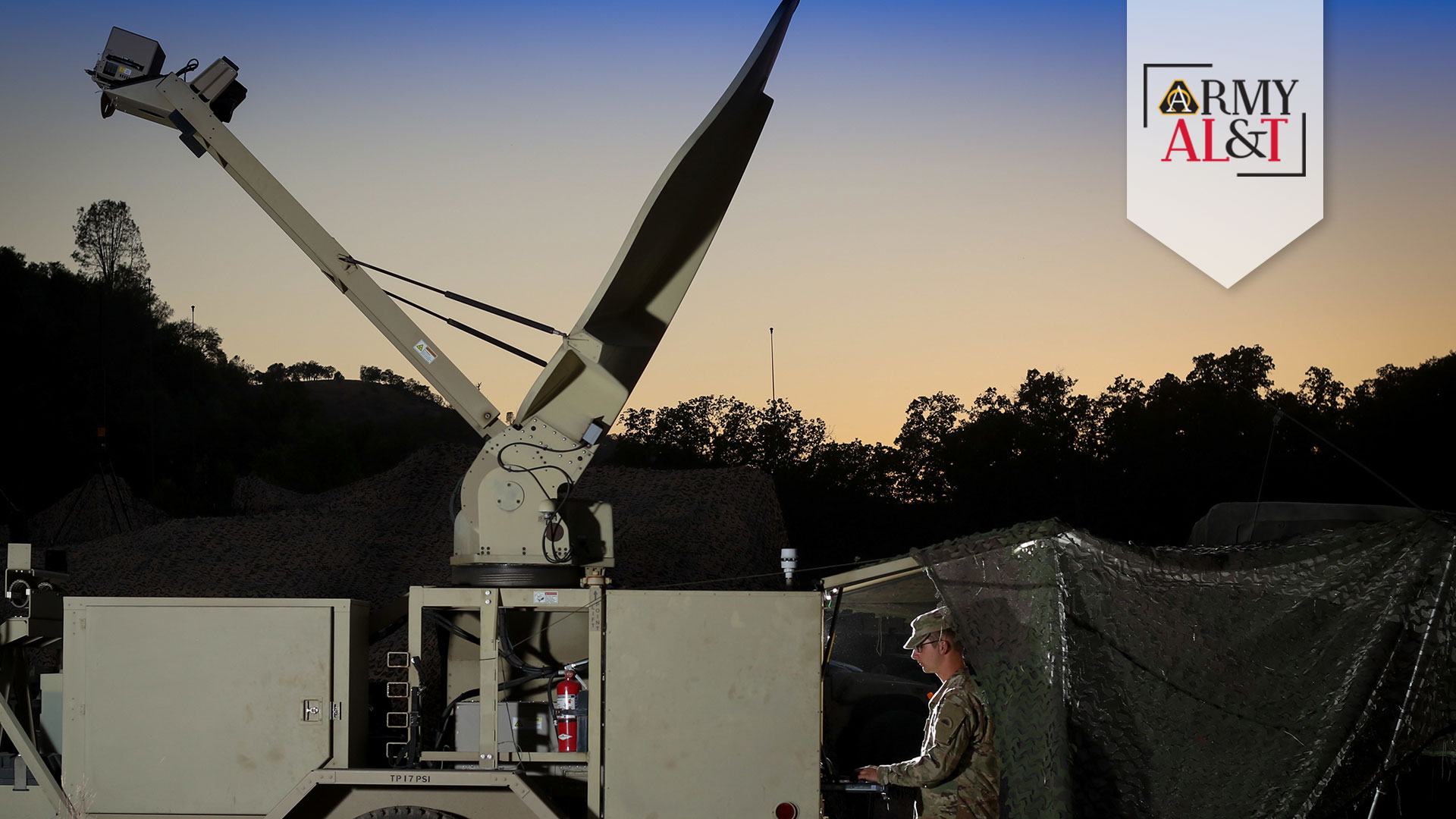Maj. Paul Flanigen
COMMAND/ORGANIZATION: Technology Applications Program Office, U.S. Army Special Operations Aviation Command
TITLE: Assistant product manager, Sensors
YEARS OF SERVICE IN WORKFORCE: 7
YEARS OF MILITARY SERVICE: 14
DAWIA CERTIFICATIONS: Level III in test and engineering; Level II in program management
EDUCATION: M.S. in systems engineering, Naval Postgraduate School; B.S. in mechanical engineering, United States Military Academy at West Point
AWARDS: Bronze Star (2), Meritorious Service Medal (2), Air Medal, Army Commendation Medal (2), Army Achievement Medal (2)
by Susan L. Follett
Maj. Paul Flanigen readily concedes that the Technology Applications Program Office within the U.S. Army Special Operations Aviation Command isn’t exactly huge. But that’s not a problem for him or anyone else in the organization. “We are a lot smaller than conventional program management offices with a corresponding scope of responsibilities,” said Flanigen, assistant product manager for Sensors. “We function by maintaining symbiotic relationships with other government agencies, focusing on the priorities of our user through constant dialogue, and frequent and direct communication with our decision-makers that allows us to confidently make rapid decisions at the lowest level. I am extremely thankful to have contracting, legal and logistics experts a few steps away from my desk who default to ‘How can we make this work?’ instead of delaying progress.”
The Technology Application Program Office “serves a user charged with accomplishing the very toughest missions in all environments, anywhere in the world, day or night, with unparalleled precision,” said Flanigen. His portfolio includes the sensors on special operations aircraft that allow them to detect and assess threats, identify friendly ground forces, and reduce risk when flying and landing in austere and hostile environments.
“The hardest part of my job is not having enough time for everything we’re working on,” he said. “I wish I had more time to get involved in all the details of all of the projects we have, but I just don’t. Thankfully, I have a few superlative program integrators who are experts in what they do and who are continually assessing and analyzing our programs so I can confidently and quickly make decisions that keep things moving forward.”
That communication goes both ways. “I work hard to directly communicate intent so that other members of my team and our contractors can execute missions quickly and efficiently and not wait on me to continually manage projects,” he added.
Flanigen spent six years as an Army aviator before coming to acquisition, and the skills and experiences he picked up during that time help him build rapport with the different stakeholders he works with now. He completed two 12-month tours in Afghanistan, “which is a very challenging environment for flying,” he said. Suitable landing spots are limited and dusty. The high-altitude flying in the foothills of the Himalayas challenges the performance of the aircraft as well as the people who operate and maintain them. Missions are often flown at night, requiring the use of night-vision goggles, Flanigen said. However, night-vision goggles work by amplifying ambient light, which was limited to the moon and the stars in the sparsely populated regions in which he was operating. All of that means that Flanigen is well-equipped to “address the technical and tactical relevance of the work we’re doing,” and to help ensure that testing and development efforts focus on capabilities that Army aviators need most.
Flanigen joined the Army Acquisition Corps in parallel with his acceptance into the Army’s Experimental Test Pilot program. As part of the test pilot program, he attended U.S. Naval Test Pilot School and learned the underlying theory of operation for rotary-wing and fixed-wing aircraft and associated mission systems. Test pilots in the course then plan and execute flight tests to apply these theories “to everything from gliders to civilian helicopters to fighter jets,” Flanigen explained, “and then the data is analyzed and used to inform written and oral reports.”
His first assignment as an experimental test pilot was at Redstone Test Center, Alabama, where he managed developmental testing on cargo and fixed-wing aircraft. “As a developmental tester, I was directly responsible for assuring the airworthiness of platforms and equipment so that time and money would be spent on safe and compliant aircraft and associated equipment,” he said.
Following that assignment, he served as an experimental test pilot at the Aviation Development Directorate (ADD), working “very closely with industry on aviation programs in the science and technology realm.” (Formerly part of the U.S. Army Aviation and Missile Research, Development and Engineering Center, the ADD is now part of the U.S. Army Combat Capabilities Development Command’s Aviation and Missile Center.)
“That work was completely different from developmental testing of relatively mature systems that I had done previously, and was very eye-opening,” he said. “It was my first opportunity to see the amount of rigor and money and other resources that go into getting equipment to the force and then updating and sustaining it. I didn’t really have an idea of how big that effort was until then.”
In the Army, as in most jobs, Soldiers don’t always get the chance to pick the work they’d like to do. Flanigen has adopted a lemons-into-lemonade mindset in response. “About half of the jobs I’ve had in the Army were not my first pick, but I have always learned and contributed,” he said. “Do the best you can in whatever opportunity you are given.” In his current role, he tries to stay in touch with experimental test pilots “ahead of and behind me, including potential Acquisition Corps candidates. There is no established path to success and many opportunities, and the community benefits by sharing insights and experiences so that people can apply themselves to roles that fit them best.”
“Faces of the Force” is an online series highlighting members of the Army Acquisition Workforce through the power of individual stories. Profiles are produced by the U.S. Army Acquisition Support Center Communication and Support Branch, working closely with public affairs officers to feature Soldiers and civilians serving in various AL&T disciplines. For more information, or to nominate someone, please go to https://asc.army.mil/web/publications/army-alt-submissions/.

